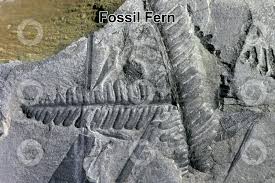Botany Notes – On Fossil Pteridophytes – For W.B.C.S. Examination.
উদ্ভিদ তত্ত্ব নোট – জীবাশ্মের টেরিডোফাইটগুলিতে – WBCS পরীক্ষা।
he pteridophytes formed the dominant part of the vegetation in the historic past. It was the middle of the Paleozoic era when these plants group was well flourished in every place. This flora of the pteridophytes was very abundant till early Mesozoic but late Mesozoic era was well dominated by the gymnosperms. In modern day the pteridophytes flora is replaced by the spermatophytes. These spermatophytes involved the gymnosperms and the angiosperms. Present era is the best flourished by the angiosperms.Continue Reading Botany Notes – On Fossil Pteridophytes – For W.B.C.S. Examination.
Ages of angiosperms
In whole world the pteridophytes are now of the relict in distribution. They are restricted to the some of the tropical rain forest and the northern hemisphere of the world. However in India the pteridophytes are distributed in to the Himalayas and the Nilgiris. Here large very beautiful tree ferns can be seen with good physiognomy, similarly epiphytic ferns and the other hanging club mosses can be seen in the Nilgiris hills. In India 500 species of the ferns can be seen with different kinds of the pattern of the foliage, which are the taxonomic significance in nature.
Pteridophytes plants have the long fossil’s history. They have been recognized in the late Silurian period of the Paleozoic era. These plants have the dominant vegetation in whole of the Paleozoic era. The middle and the late Paleozoic era can be regarded as the age of ferns or ages of pteridophytes. The giant lycopsida and the horse tails and the arborescent tree ferns dominated the whole biota at that time. The pteridophytes which are presented by the lycopsida and sphenopsida and the pteridopsida which are of the length of the maximum 6 to 7 feet’s were very abundant in distribution and in height of the trees . They were reportedly around 120 feet’s at the time of the Paleozoic era. They were very abundant and highly s in whole vegetation. This era was the evolution of the pteridophytes and the evolution of the gymnosperms. However in today world they are represented only by the some relict genera and the relict fossils evidences .
That era was dominated by the Lepidodendron, sigilalria and the calamites and other fossil lycopsida of that era.
However distribution of the ferns was the matter of the slightly ambiguity, since ferns were of less diversity in the Paleozoic era but as the evolution proceeds and the time passes the diversity of the ferns increase, well a number of the ferns can be seen in that era with great diversity.
In India, the fossil pteridophytes are studied by Surange in detail. He has given the whole account of the places in India, which have the long distribution of the fossils pteridophytes. Among the four classes of the pteridophytes like Psilopsida, lycopsida and sphenopsida and pteridopsida, he has described one of the members of psilophyta, seven fossil members of the lycopodiophyta, 12 members of the sphenophyta and 66 members of the pteriphyta. A large number of the fossil ferns have been described in the Rajmahal hills of the India . Bose, Sah and Sharma have described a number of the fossil ferns from the Bihar and other hills of the India. Suthar & Sharma reconstruct the whole solenopteris from the jurrasic flora of the Rajmahal hills.
They found the plant in the form of the leaves, stems, flower, and the seeds in different forms. These plants organs have been termed with different terminology .
In India the Gondwana land was the point of distribution of the many fossil ferns & horse tails. Glossopteris flora of the Mesozoic was constituted by the many different genera of the sphenophytaof the pteridophyta.
Some the detailed account of the fossils pteridophyta is described below:
Fossil psilophtales: This was the new class which has the assemblages of the fossil plants. This class was coined in the era of the 1917. In that class few genera was included like the Rhynia, horneophyton and psilophytlaes. These plants were distributed during the late Silurian and the Devonian and the Upper Carboniferous period. These plants lack true roots, leaves and the other structures.
However developed vascular system can be seen in these groups. Psilophytles are totally different from the other similarly named class termed as the psilotales.
Fossil lycopsida: The class lycopodiales has the assemblage of the living and the fossil genera’s. This is one of the oldest lineages of the fossil genera’s and the branches . In these fossil genera’s typical heterospory and the alternation of the generation can be seen with clear examples. Some of the fossil genera’s are enlisted in these orders as:
• Lepidodendrales
• Isoetales
• Zosterophyllaeles
Lepidodendrales has the long fossil history, with primitive vascular and arbores cent plants related to the lycopsida . This plant group were well flourished in the late carboniferous period, however rapid declines of the lepidodendrales can be seen during the Mesozoic era. These plants group reached to the height up to the 30-40 meters during the devonian and the late Silurian periods .
For Guidance of WBCS (Exe.) Etc. Preliminary , Main Exam and Interview, Study Mat, Mock Test, Guided by WBCS Gr A Officers , Online and Classroom, Call 9674493673, or mail us at – mailus@wbcsmadeeasy.in
Visit our you tube channel WBCSMadeEasy™ You tube Channel
Please subscribe here to get all future updates on this post/page/category/website



 Toll Free 1800 572 9282
Toll Free 1800 572 9282  mailus@wbcsmadeeasy.in
mailus@wbcsmadeeasy.in


















































































































